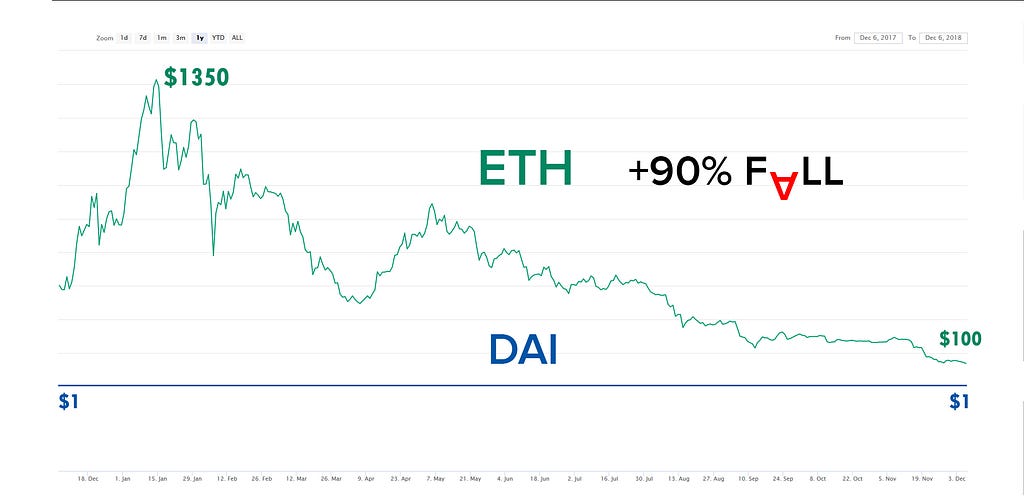Latest news about Bitcoin and all cryptocurrencies. Your daily crypto news habit.

Crypto-collateralized stablecoins lock crypto-assets such as ETH as collateral — with a significantly higher value — to back their stable tokens. This way, whenever the backing crypto-asset loses value to lower levels than the value of stable tokens, the peg is broken and the system collapses as a consequence. Accordingly, many people believe stablecoins of the kind are like ticking bombs and can be detonated at any moment.
However, a brief review of market prices during the last year reveals that the most prominent crypto-collateralized stablecoin DAI has firmly maintained its peg even at times when Ether — the crypto-asset backing it — lost value to one-tenth comparing to its peak price. So, the argument presented in paragraph one seems to be far from true.
Are we missing something?
In fact, it is true that crypto-collateralized stablecoins are at risk of breaking their peg, but, the risk is far less than what is generally believed.
But why?
Smart contracts issuing crypto-collateralized stablecoins can be viewed as banks issuing loans. As mentioned before, they require collateral with a value that is significantly higher than the loan they are providing So if the collateral value decreases to lower levels than the value of the loans, the system collapses.
But, that’s not the whole story.
Smart contracts do not remain idle to allow the collateral depreciate value to lower than or even equal to the value of the loans. Once the collateral loses value to less than 1.5 times the value of loans, the smart contract actively puts the collateral in an auction that only accepts native stablecoins.
For example, Ether is worth $200, John locks 1 Ether in order to receive $100 worth of stablecoins. Now, suppose Ether price falls to $180, $160 and so on. As soon as price reaches $150, the smart contract puts all collateral Ethers in an auction in order to forcibly settle John’s loan. Buyers will probably come along who are willing to buy John’s Ethers at a little bit cheaper price by providing $100 worth of stablecoins. Subsequently, John’s loan is settled. More than two third of his Ether will be paid for settling his loan and the remaining is paid back to him. So, John’s loan is settled before his collateral value gets too close to his stablecoins.
So, where exactly is the risk? Can the system collapse at all?
The answer is yes.
The system can collapse if and only if the price fall the collateral is so fast and furious that nobody is willing to buy $100 worth of stablecoins in order to receive $150 worth of Ether and benefit by 50% because they are afraid that in the short period of time that they are buying the stablecoins and settling the loans, Ether falls below $100.
It is worth mentioning that most of those who participate these auctions are bots for whom even a 1% gain per auction is more than enough. These bots are able to finish all the steps above in a significantly short time. Therefore, a system collapse for a crypto-collateralized stablecoin is as probable as Ether losing one-third of value in a few minutes.
In conclusion, the risk is real but unlikely, and, you don’t see people living on the street because there is a real but unlikely risk of an earthquake, do you?
Are Crypto-Collateralized Stablecoins Ticking Bombs? was originally published in Hacker Noon on Medium, where people are continuing the conversation by highlighting and responding to this story.
Disclaimer
The views and opinions expressed in this article are solely those of the authors and do not reflect the views of Bitcoin Insider. Every investment and trading move involves risk - this is especially true for cryptocurrencies given their volatility. We strongly advise our readers to conduct their own research when making a decision.